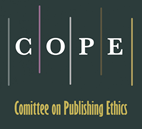How to Decide for Drain Placement During Thyroidectomy? Qualitative Exploration to Formulation of a Decision Tree
Keywords:
Drainage, Thyroidectomy, Drain PlacementAbstract
Contrary to significant clinical evidence, many surgeons still use drains following a thyroidectomy for several reasons, including intent to prevent postoperative hemorrhage and seroma formation. Quality of hemostasis, size of gland, quality of thyroid tissue and its dissection, presence of adhesions and extent of surgery may all influence surgeon’s decision to use a drain. The aim of this study is to qualitatively explore the reasons for use of drains in thyroidectomy, to evaluate given reasons in a clinical setting and finally, to develop a consensus decision tree.
Published
How to Cite
Issue
Section
License
Copyright (c) 2020 Talat Waseem, Safia Zahir Ahmad, Zaitoon Zafar, Muhammad Hasham Ashraf

This work is licensed under a Creative Commons Attribution-NonCommercial-NoDerivatives 4.0 International License.












